#venice architecture biennale
Explore tagged Tumblr posts
Text

Pezo von Ellrichshausen, Vara Pavilion, Giardini, The 15th Venice Architecture Biennale, 2016 VS Gianni Berengo Gardin, Giorgio Morandi's Studio, 2008
#pezo von Ellrichshausen#circle#circles#architecture#pavilion#giardini#biennale#biennale di venezia#venice architecture biennale#italy#italia#giardini della biennale#gianni berengo gardin#giorgio morandi#via fondazza#mambo#atelier morandi#casa morandi
101 notes
·
View notes
Text

Dimensions of Citizenship, US Pavilion, Venice Architecture Biennale 2018
34 notes
·
View notes
Text
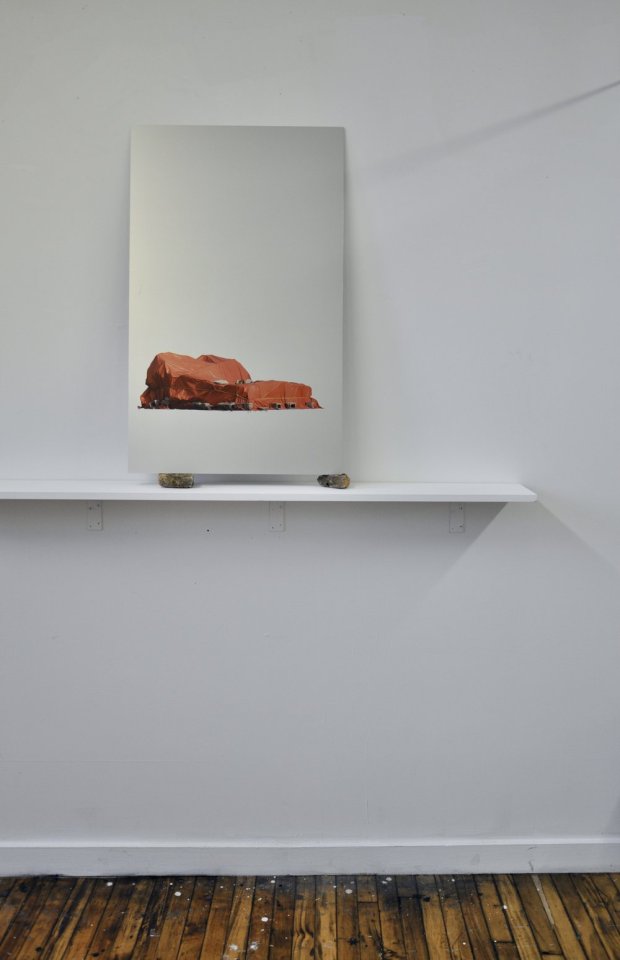
Ayesha Kamal Khan’s ‘placeholder (sleeping dragon), N 33° 40' 58.1063", E 72° 59' 29.5449’
Born in New York, Ayesha Kamal Khan's work serves as a reflective interplay between tangible and intangible facets of the spaces we inhabit. It enhances the intricate layers of 'placehood', its infinite arrangements, and its incapacity for translation. Based between New York and Islamabad, Pakistan, Khan is a recent fellow of the Whitney Independent Study Program 2022-23. She completed her BFA from the National College of Arts, Pakistan in 2011 and an MFA from Pratt Institute in 2015. Her work has been exhibited internationally including Venice Architecture Biennale 2021, the Cuadro Gallery in Dubai, and the Queens Museum in New York. She also presently teaches at the New York Academy of Art and Pratt Institute.
Excerpt from Ayesha Kamal Khan's profile for Bonhams.
Text by Shreya Ajmani
#Ayesha Kamal Khan#Venice Architecture Biennale#Whitney Independent Study Program#Whitney ISP#New York
0 notes
Text

Croatian Pavilion at Venice Architecture Biennale explores one of Europe's largest wetlands
Curators Mia Roth and Tonči Čerina and editorial team Luka Fatović, Vedran Kasap, Ozana Ursić, Niko Mihaljević and Ivica Mitrović created the pavilion, called Same as it Ever Was, to have a "twofold presence".



0 notes
Text

Sculpture gardens, Carlo Scarpa, Venice
200 notes
·
View notes
Text

Büro Uebele / Karin Sander & Philip Ursprung / Venice Biennale – Neighbours / Typography / 2023
#büro uebele#karin sander#philip ursprung#venice biennale#neighbours#typography#2023#architecture#18th international architecture exhibition
59 notes
·
View notes
Text
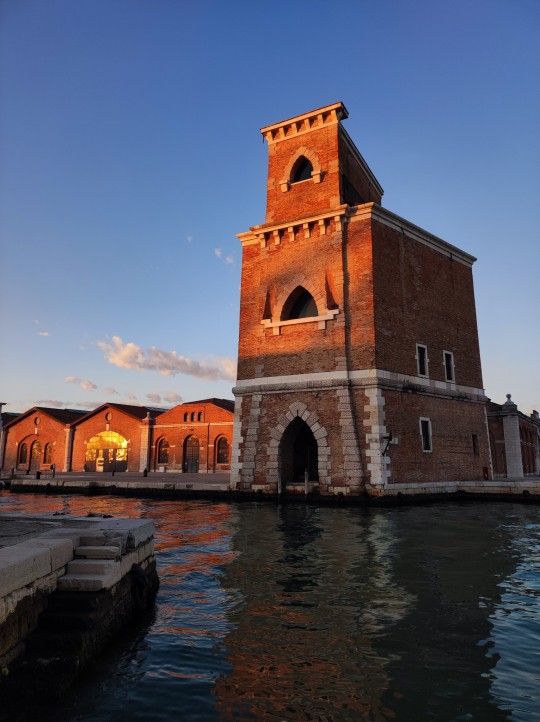
Arsenale di Venezia, November 2023
#venezia#biennale#arsenale#photography#sunset#sea#venice#italy#italy travel#italia#autumn#coast#architecture photography#architettura#architecture#sky#city
10 notes
·
View notes
Photo
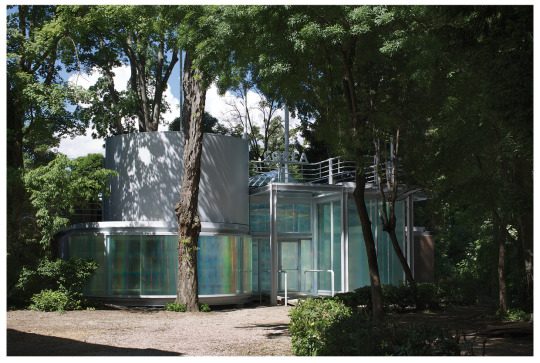
SOIK JUNG & KYONG PARK KOREAN PAVILION BIENNALE D’ARCHITETTURA 2023 - The Laboratory of the Future Image © Arts Council Korea
#korean pavilion#biennale#architecture#architect#exhibition#biennale venice#korean architecture#design#designer#italy#architecture exhibition#museum#space#context#material#juliaknz#photograph#sustainability#archdaily#dezeen#ignant
44 notes
·
View notes
Text
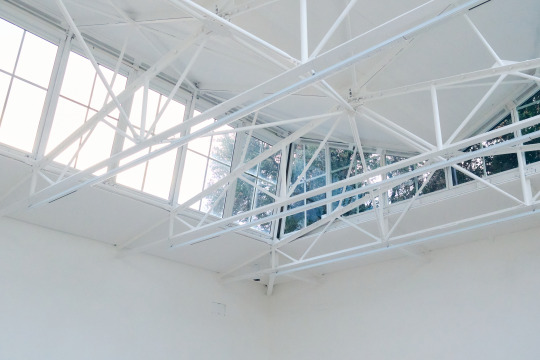
Venice, Italy 2023 © Christian Baumgarten
#x100v#fujifilm#fujixseries#italy#venice#venezia#veneto#venice biennale#biennale di venezia#giardini#swisspavilion#architecture#structure
2 notes
·
View notes
Text
Tinatin Gurgenidze: Between Two Cities
Continuing our talks on the Independent Coastal Radio NOR with Tinatin Gurgenidze, an architect and urban researcher from Georgia. She is one of the co-founders of the Tbilisi Architecture Biennial. Listen to new edition of Weltraum.
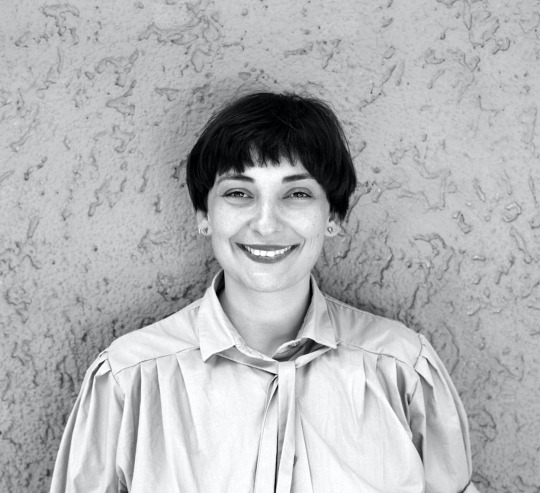
Explain me more about the Tbilisi architectural biennial?
Tinatin Gurgenidze: Since I've left Georgia, I always wanted to do something there. I started my PhD research about a neighbourhood in Tbilisi and at some point in 2017 spent half a year in Georgia. This is when the idea of making a cultural event in this district came up. With some friends we made this utopian idea of establishing an architectural biennial in 2017. Afterwards we managed to organise the first edition in 2018. The main reason was the lack of cultural activities in Georgia concerning architecture and also a lack of critical discourse. It was important to create a platform to bring different actors together and talk about certain topics. The second important reason was to engage with the city critically and talk about existing problems.

The inaugural Tbilisi Architecture Biennial was based in the suburb of Gldani. Photo is by Tako Robakidze
Do you also involve different communities in this discourse?
TG: The initial idea is to create it for the local audience but as we had less expertise, and we were lacking experiences of creating such events we made it quite international at the beginning. The local audience at first was not so much present, probably because it was the first time, they didn't really understand what we were doing, but it radically grew in the last two editions. Our audience is very different because we make very interdisciplinary activities. For example, in the last edition we had the film screenings where completely other audience attended compared to the symposium. Each activity has different audiences and it's always open to new people depending on what is happening. Participation wise it's quite international but oriented and based on local topics.
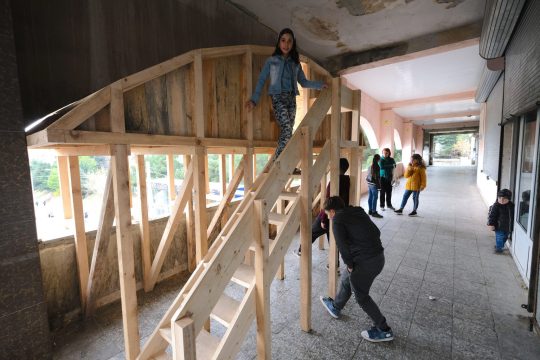
Young architects built guerrilla structures into existing buildings, like this pavilion by Maria Kremer. Photo is by Stefan Rusu
What did LINA offered the the biennial?
TG: This was probably the most important things for us, being part of LINA platform gave us so much connections throughout all Europe with different organisations and also so much support. Without LINA we have not gone so far. I feel very grateful for that, and I think we sometimes forget how important it is to come together and share, what LINA is doing. We've got also partners for another project that we have met through LINA.
How is to create such events in a precarious situation of work as a freelance?
TG: I am not completely a freelancer because I work for a local NGO in Berlin which is partnering with biennial and also my colleagues in Georgia they get their part time employment as well. Creative Europe funding allows us to have the salaries, which is a very positive thing. There is so much energy and time that we invested for free, overworking, but slowly with experiences and the results we get it pays back.
Your PhD thesis is based on the (post-) Soviet mass housing settlement of Gldani, a suburb of Tbilisi; What are you researching?
TG: It's a complicated story. When I started my PhD I did my research and stop it because of lack of time as I was involved in the organising the biennial. I have a plan to start again this year. It changed a lot from what I was researching and what I want to research now because I am working on the period of transformation after the break up of the Soviet Union and introduction of the market economy and how this influenced the built environment. I would like to research the typologies of the self-made structures and this transformation that happened in this period and archive the cases. I know the typologies will disappear but I would like to pay attention to this phenomena because this is also the period when self-made architecture was done and it's also an architectural style that needs to be studied.
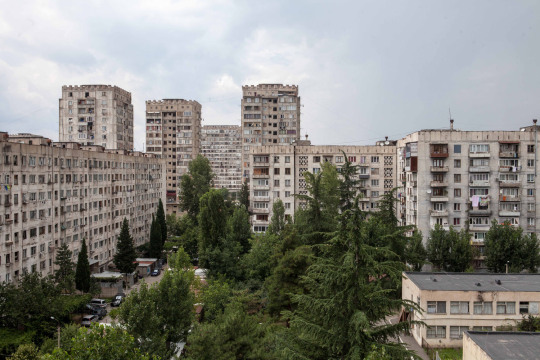
Soviet mass housing settlement of Gldani, a suburb of Tbilisi. Photo © Tbilisi Architectural Biennial
Some people doesn't consider the self-made as an architectural style. I have to proof why it is it important to document this.
How did neoliberal period influenced on the architecture and society in Georgia?
TG: Extremely. From one radical system we entered to another radical system. This is having a massive influence, specially exploiting all the resources like selling out to foreign investors valleys and forests. The feeling of common ship is completely lost. This process has gone so far that since few years there are movements and protest. Since there is another side there is some hope. The situation is so extreme that people are also loosing their homes in a very brutal way. The banking system is super violent and influences drastically on people's life. The discourse is now opening more and more around the topic of common resources and that forests shouldn't be sold to one owner. People are slowly starting to understand this and these protest start from the region, they didn't started in the big cities, this fact makes it strong as well. It is very important that they reached the centre and are more and more people understand the problematic.
What about the privatisation of water in Georgia?
TG: We worked on this topic during the Venice biennial last year and we will continue to talk about it this year during the Tbilisi biennial. Water in Georgia is one of the most valuable resources as the territory in Georgia has so many different bodies of water - from nature springs to lakes, rivers, glacial, sea. The reality is that not everybody has equal access to the drinking water. Rather that some made water into a commodity and earning money from it, while on the other hand locals might not have the access to drinking water in their homes. It is a paradox how this can happen and a way of modern colonisation that affects environment and ecosystems because t's not really controlled. There is a problem of what kind of contracts are being made and how the natural resources are being sold out.


Exploring the Relationship Between Time and Energy: The Georgian Pavilion at the 2023 Venice Biennale is Curated by the Tbilisi Architecture Biennial Photo © Gigi Shukakidze
It is not possible to sell an entire valley or a river to a private investor, this is something that has to belong to the country and its people.
How do you see architecture in the future?
TG: A lot of rethinking must be done of what is architecture and what it can be in the future. We must really think if we need to build completely new buildings and urbanise so much territory. We must start to radically change not to build new things. It's proven many times that reconstruction is much more eco-friendly and cheaper. How much more can we build? According to the calculations where more people are coming into cities, we shall build more, but how far can we go? If we build more, more people will come therefore we need to find a balance between land, regions and cities, which can't grow endlessly.
Architecture is not an alone standing profession, it's connected with everything around it.
-
Tinatin Gurgenidze lives and works in Berlin. She studied architecture and urban design in Tbilisi and Barcelona. Trained as an architect and urban designer, Tinatin is involved in research and curatorial work regarding critical urban issues. She is one of the co-founders of the Tbilisi Architecture Biennial. Tinatin is also an author of several publications and articles in journals as ‘Architectural review’ and ‘Failed Architecture’. Currently, she is working on her PhD thesis concerning the (post-) Soviet mass housing settlement of Gldani, a suburb of Tbilisi. Tinatin’s work concentrates on a sociological approach towards architecture and urban space. In her work she tries to understand what happened to Gldani in the transition period after Georgia regained its independence in 1991.
Here You can listen to the WELTRAUM interview.

4 notes
·
View notes
Text
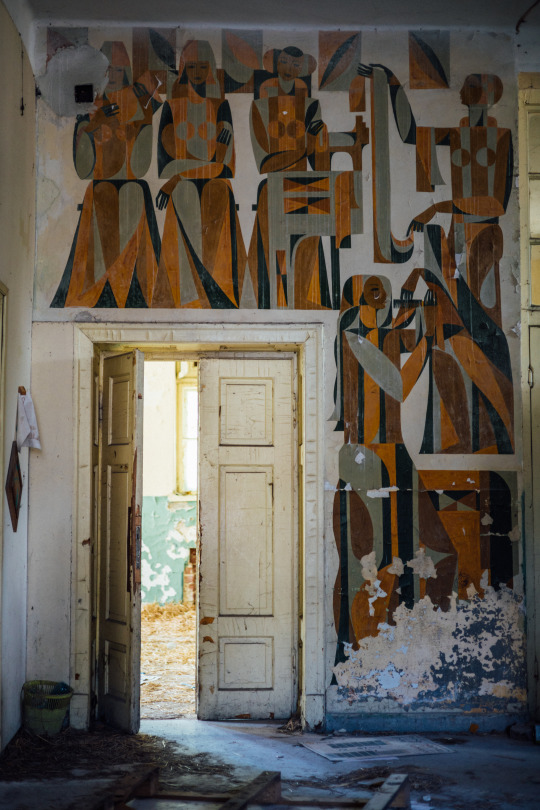

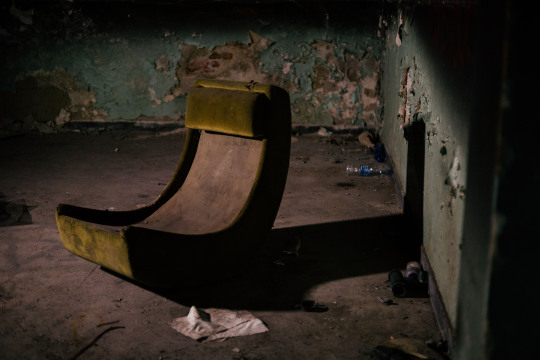
AN ENDING STORY
#bulgaria#photographers#photoblog#streetphotography#original photographers#architecture of doom#doom#biennale architettura#venice biennale#abandoned
6 notes
·
View notes
Text
...This year’s theme “The Laboratory of the Future”, is inviting architects to consider the African continent as the protagonist of the future...
The 18th International Architecture Exhibition, curated by Lesley Lokko, is set to open in just one month's time with a focus on "The Laboratory of the Future", casting the African continent as a leading force in shaping the world to come, and challenging conventional notions of what the future can hold and what a laboratory can be. Featuring 63 National Pavilions, 89 Participants, and 9 collateral events in the city, the 2023 Venice Architecture Biennale invites practitioners from a wide range of disciplines and backgrounds to explore new possibilities.
.
1 note
·
View note
Text

In a time when the expansion of the United States–Mexico border wall looms over more nuanced discourses on national citizenship, it is urgent for architects and designers to envision what it means to be a citizen today.
Questions of belonging, of who should be included and how, are posed with every athlete taking a knee, every #metoo, every presidential tweet, and every protest sign or fist raised. Yet as transnational flows of capital, digital technologies, and geopolitical transformations expand, conventional notions of citizenship are undermined. We define the term as a tangle of rights, responsibilities, and attachments linked to the built environment. And so we ask: How might architecture respond to, shape, and express rhizomatic and paradoxical conditions of citizenship?
The US Pavilion explores seven spatial scales: Citizen, Civitas, Region, Nation, Globe, Network, and Cosmos. These scales, telescoping from body to city to heavens, broadly position citizenship as a critical global topic. Commissioned installations by architects, landscape architects, artists, and theorists investigate spaces of citizenship marked by histories of inequality and the violence imposed on people, non-human actors, and ecologies. These works aim to manifest the democratic ideals of inclusion against the grain of broader systems: new forms of sharing economy platforms, the legacies of the Underground Railroad, tenuous cross-national alliances at the border region, or the seemingly Sisyphean task of buttressing coastline topologies against rising tides.
The installations and the film and video works on view do not solve the complex relationships of governance, affinity, and circumstance that bind us, citizen to stranger, self to other. Instead, they use architecture’s disciplinary agency to render visible paradoxes and formulations of belonging. Only when spatial understandings of citizenship—legal, cultural, and ecological—are in sight might we struggle free from antiquated definitions, forms, or bureaucracies and activate potent spaces for design. —Dimensions of Citizenship, US Pavilion, Biennale Architettura 2018, May 26–November 25, 2018, Venice (http://dimensionsofcitizenship.org)
23 notes
·
View notes
Text
Nigerian architect Demas Nwoko receives the 2023 Golden Lion for Venice Biennale








0 notes
Text

UNStudio unveils design for blocky children's museum in Qatar
Dutch architecture office UNStudio has revealed its design for the Dadu, Children's Museum of Qatar at an exhibition of upcoming museums in Qatar during the Venice Architecture Biennale.



#unstudio#dutch architecture firm#dadu#children's museum of qatar#venice architecture biennale#future architecture#architecture
1 note
·
View note
Text
just planned out the most insane 6 week europe trip. summer 2025 is far away right i can save up right.
#2025 bc i wanna go back to the venice architecture biennale and that's the next time it's on#but yeah turning 26 in paris would be such a slay#its like#barcelona > marseille > nice > bern > zurich > lucerne > como#> milan > florence > cinque terre > pisa > rome > matera > bari > venice > vienna > bratislava > prague > berlin > copenhagen > hamburg#> amsterdam > paris > london#ive already been to london paris vienna milan florence cinque terre pisa rome venice and matera#but i wanna go back and show my brother#i already cut lisbon munich warsaw athens brussels geneva and all of scotland out rip#bern marseille milan matera bari copenhagen and hamburg are next to be cut
1 note
·
View note